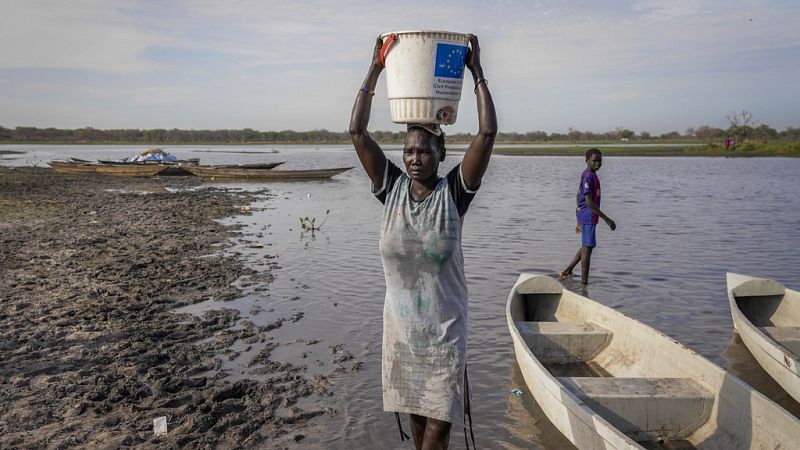
Global Crises Intensify Hunger in Africa and the Middle East
The escalating global crises have significantly worsened hunger in Africa and the Greater Middle East, according to recent reports from international organizations. The United Nations' State of Food Security and Nutrition in the World 2025 (SOFI) highlights that trade tensions, conflicts, and climate change are the main drivers behind rising food inflation worldwide.
This report, compiled by a coalition of UN agencies including the Food and Agriculture Organization (FAO), UNICEF, the World Food Programme (WFP), the World Health Organization (WHO), and the International Fund for Agricultural Development (IFAD), underscores the urgent need for action. Álvaro Lario, president of IFAD, emphasized the severity of the situation, particularly in Africa and the Middle East. He pointed out that the combination of conflicts, economic or trade disruptions, and climate shocks is fueling the crisis.
Since the trade tensions initiated during the Trump administration in 2018, many elevated tariffs have remained in place, affecting global agricultural trade dynamics. These ongoing tensions have contributed to a persistent rise in food prices and supply chain disruptions.
Alarming Statistics on Hunger
According to the survey, the proportion of the population facing hunger in Africa surpassed 20% in 2024, impacting 307 million people. In the Greater Middle East, an estimated 12.7% of the population, or more than 39 million people, faced hunger in the same year. These figures highlight the growing challenge of ensuring food security in these regions.
Small-scale farming activities are under severe threat due to deteriorating living conditions for rural populations. Lario explained that when individuals cannot sustain themselves in their communities, they are often forced to migrate. This link between migration, food insecurity, and the ability to produce food is becoming increasingly evident.
Challenges Faced by Small-Scale Farmers
Small-scale farmers, defined as those cultivating less than 2 hectares of land, play a crucial role in global food production. They contribute one-third of the world’s food and up to 70% of the food in Africa. However, many of these farmers live below the poverty threshold, with rural populations accounting for 80% of the world's poorest individuals.
Despite their importance, small-scale farmers receive minimal support from international aid. According to IFAD assessments, they receive less than 1% of climate finance, which amounts to slightly over €4 billion annually. This falls far short of the €70 billion needed to adequately support them.
Long-term investment in agriculture and small-scale farming is essential for addressing global hunger. Lario noted that Africa imports approximately €70-80 billion worth of food each year, indicating the potential for self-sufficiency and job creation within the continent. Each year, around 10 million young Africans enter the job market, presenting opportunities for growth in sectors such as production, distribution, storage, marketing, and exporting.
Conflicts Disrupting Food Chains
The Integrated Food Security Phase Classification (IPC) reveals that over 35 million people are in a state of emergency (IPC Phase 4), while nearly 2 million face catastrophic conditions (IPC Phase 5). Countries such as the Gaza Strip, South Sudan, Sudan, Yemen, and Haiti are among the most affected. In the Gaza Strip, 100% of the population faces high levels of acute food insecurity, with numbers doubling compared to 2023. This represents the highest recorded figure in IPC history.
Lario concluded that the situation remains alarming, especially in Africa and the Middle East, where the numbers continue to rise. Addressing these challenges requires coordinated efforts, increased investment, and sustainable solutions to ensure food security for vulnerable populations.


Posting Komentar